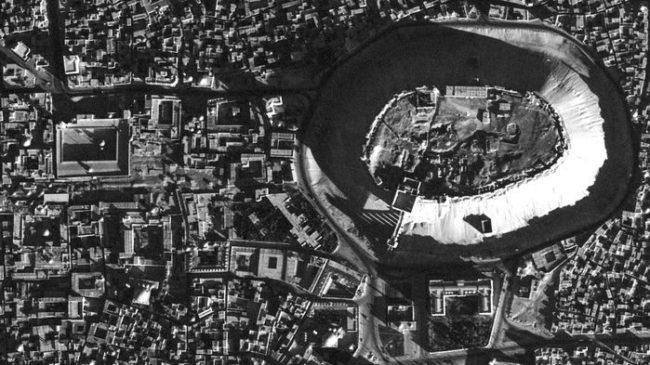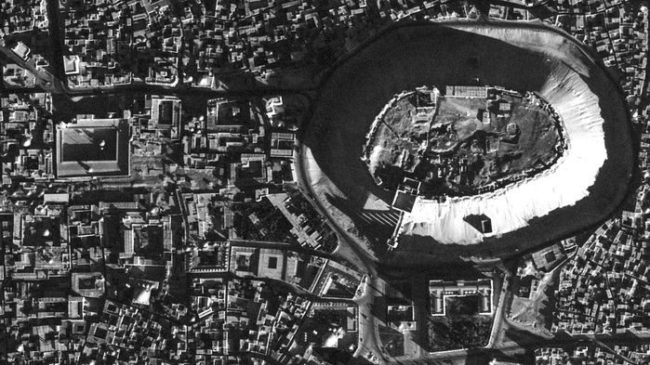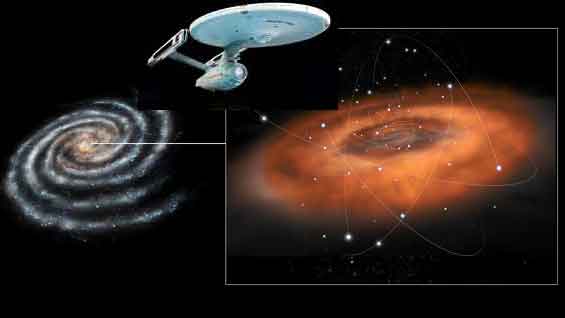Within the 1950s and early ’60s, with the Chilly Battle at its peak, the USA flew U2 spy planes throughout Europe, the Center East, and central jap Asia, taking pictures of fascinating navy targets. Although the missions usually linked Level A to Level B, say an air subject and an essential metropolis, in lots of circumstances the digicam stored recording between these spots, capturing hundreds of images of the desert, steppes, fields, and villages beneath.
Such a set can symbolize a goldmine for panorama archaeologists like Emily Hammer of the College of Pennsylvania and Jason Ur of Harvard College. However for many years, all movie and paperwork from these missions–code-named CHESS by the U.S. authorities–remained labeled. And even after they grew to become public in 1997, they weren’t listed or scanned.
Till now, the vast majority of this type of historic aerial documentation got here from the CORONA spy satellite tv for pc program, which the U.S. ran between 1959 and 1972. However solely the highest-resolution CORONA pictures, taken throughout this system’s last 5 years, are helpful for many archaeological functions. The U2 images are earlier and the next decision than even the most effective CORONA pictures, providing the prospect to see historic options undecipherable by CORONA or already gone by the point of these missions.
Figuring out the potential perception provided by the U2 pictures, Hammer and Ur started sifting by way of the supplies. By analyzing hundreds of high- and low-resolution frames, they found many historic and archeological options, together with prehistoric searching traps, 3,000-year-old irrigation canals, and 60-year-old marsh villages not seen at the moment. The work, which they revealed within the journal Advances in Archaeological Practice, represents the primary archaeological use of U2 spy aircraft imagery–and a brand new and thrilling window into historical past.

“The images present an interesting have a look at the Center East a number of a long time in the past, displaying, for instance, historic Aleppo lengthy earlier than the huge destruction wrought within the ongoing civil warfare,” says Hammer, an assistant professor in Penn’s Close to Japanese languages and civilizations division. “Plus, the work and the accompanying on-line sources will enable different researchers to establish and entry U2 images for the primary time.”
Hammer and Ur have each performed analysis within the Center East for many years, in Turkey, Azerbaijan, Iran, Iraq, and Syria. They’ve additionally each used CORONA spy satellite tv for pc imagery extensively. Nevertheless, a lot of these picture units didn’t date again so far as Hammer wished they might. “We knew that U2 spy planes will need to have taken hundreds of pictures throughout massive components of the Center East, however there was no straightforward approach to entry or reproduce the movie negatives,” she says.
An opportunity encounter with Lin Xu, a researcher who had retrieved U2 pictures of his hometown in China, led Hammer and Ur to press on. “Seeing the wonderful high quality of these archival images,” Hammer says, “we knew that it will be well worth the detective work it will take to construct a scientific index of them.”
It wasn’t a straightforward course of. Forward of time, they needed to choose the movie rolls they wished moved from the Nationwide Archives’ storage heart in Kansas to the aerial movie part in Maryland. As soon as there, the researchers unspooled a whole lot of toes of movie over a light-weight desk to establish pertinent frames, then photographed the negatives in items utilizing a 100-millimeter macro lens. Later, they stitched collectively and adjusted every body, earlier than geo-referencing the images utilizing GIS software program to match up pictures with coordinates of real-world locations.
Regardless of the tedium of among the particular person duties, the method excited Hammer. “As you flip the spool of a movie roll following the trail of the U2 aircraft, you could not know precisely what you’ll see in unfamiliar locations, so there’s usually a way of exploration and discovery,” she says. “Different occasions, the pilots had been flying over areas I knew by coronary heart from journey and examine, and I might nearly maintain my breath, hoping that the aircraft had veered just a bit to the proper or left.”
The hours of labor paid off, revealing many essential archaeological options, together with prehistoric searching traps known as desert kites in jap Jordan, an Assyrian canal system in northern Iraq, and marshes in southern Iraq, case research the researchers highlighted of their paper.
Desert kites, stone-wall buildings that date again 5,000 to eight,000 years, had been used to entice gazelle and different related animals. The dry desert of jap Jordan preserved a lot of them, however agricultural enlargement in western Jordan dismantled or destroyed many extra. The satellite tv for pc pictures deliver them again to life, showcasing an online of diamond-shaped enclosures with what appear to be lengthy kite tails, providing the most effective view, so far, of those essential searching instruments.

The second characteristic, the canal system in northern Iraq, offers perception into how an early empire maintained its energy and ruled, Hammer explains. “The Assyrians constructed the primary massive, long-lasting, multi-cultural empire of the traditional world, so many individuals are fascinated about how they organized territory, managed folks, constructed their big cities, and managed the land,” she says. “The irrigation system fed the royal capitals, made agricultural surplus manufacturing potential, and supplied water to villages.”
Lastly, the U2 pictures of southern Iraq current the structure, measurement, and environmental place of Marsh Arab communities within the late 1950s and early 1960s, a lot of which disappeared after huge hydroelectric dams in Turkey, Syria, and Iraq impounded the rivers, and particularly after the federal government of Saddam Hussein intentionally drained the marshes. Earlier than that, “folks lived a novel way of life there for hundreds of years, herding water buffalo, constructing homes and all method of issues out of reeds, residing on floating islands of reeds, planting date palms, and fishing,” Hammer says. “Now we will examine the spatial group, demography, and life of those communities.”
Although the three archaeological options symbolize completely different historic time scales, going again hundreds of years or simply a long time, all of them exhibit how people are altering the pure panorama, usually in methods seen solely from a 70,000-foot view.
Aerial pictures like these from the U2 spy missions enable archaeologists like Hammer and Ur to journey again in time. “The actions of historical human communities continuously left large-scale traces on the panorama,” Hammer says. “You possibly can’t see these patterns if you’re standing on prime of them, however similar to stepping again from the blobs of paint on an Impressionist portray reveals the complete image, aerial and satellite tv for pc imagery enable the patterns to emerge.”



